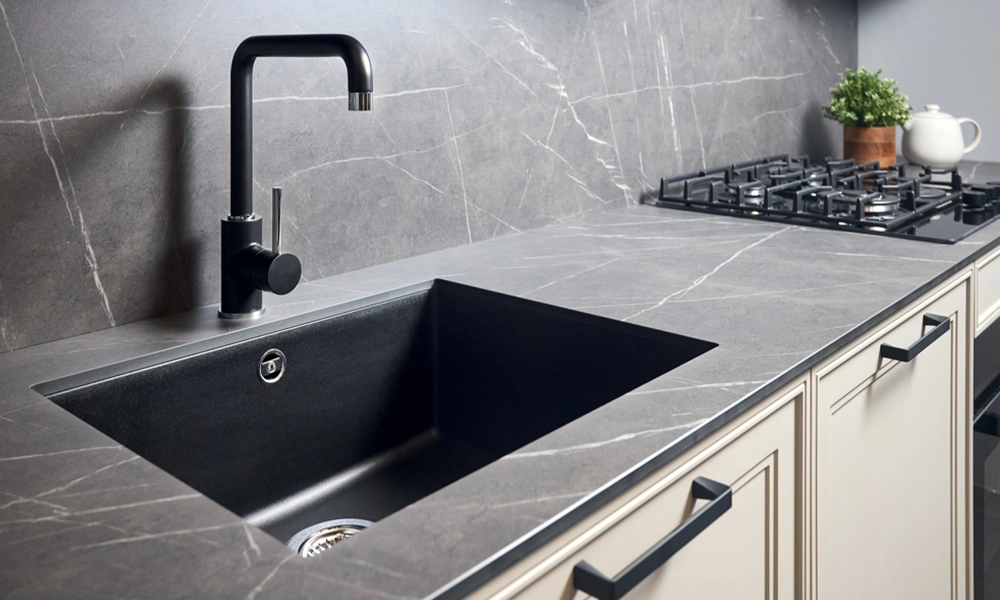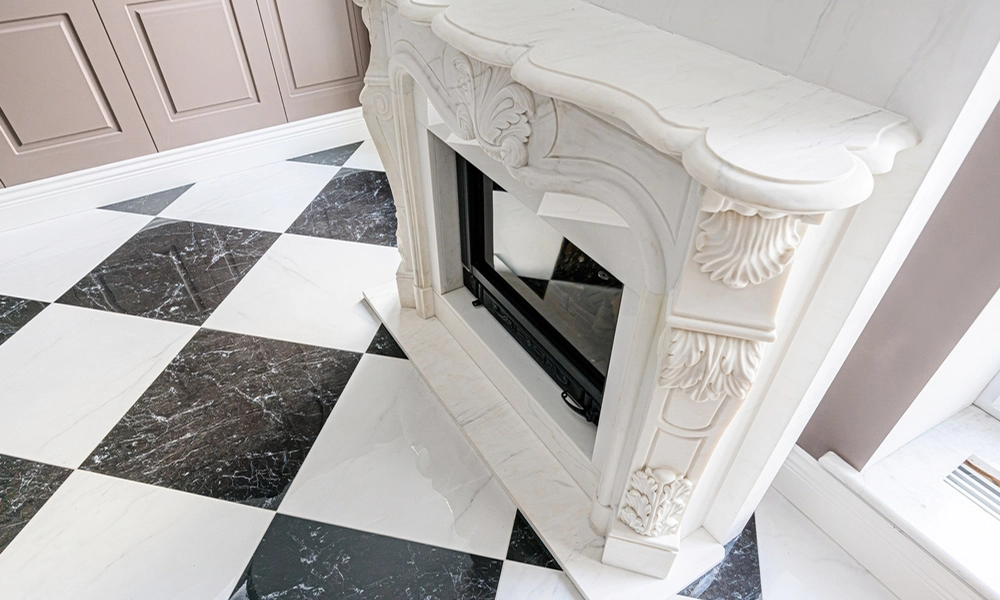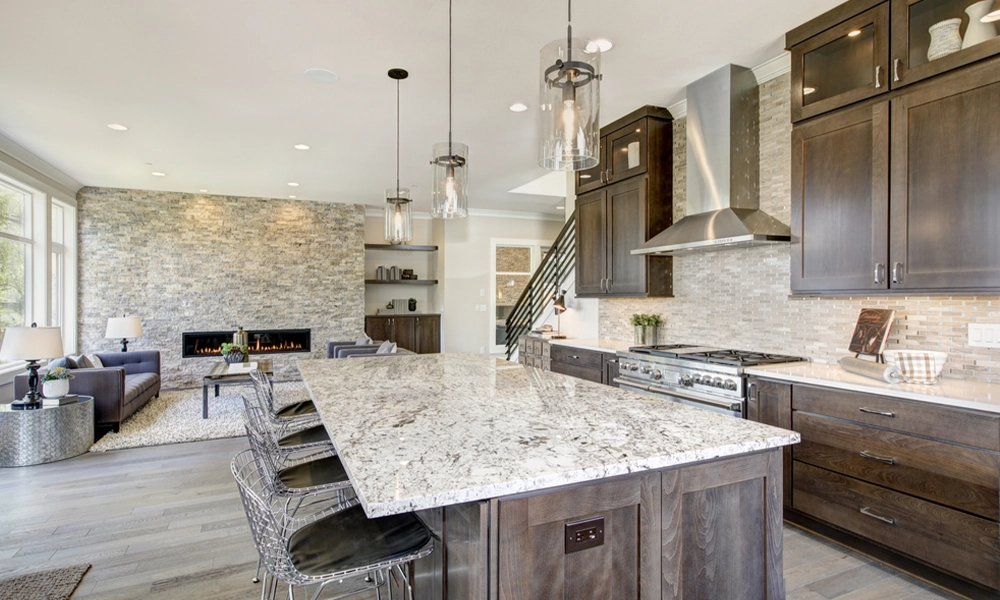Durability: Granite Or Marble
When it comes to choosing between granite or marble for your home, one of the most important factors to consider is durability. Both stones are natural materials that add beauty to any space, but they offer different levels of resistance to wear and tear.
Granite Durability
Granite is often regarded as one of the most durable natural stones available. Known for its hardness and toughness, granite is incredibly resistant to scratches, stains, and heat. It is an excellent choice for high-traffic areas, especially kitchens, where daily use and exposure to hot cookware and sharp objects are common. Due to its dense composition, granite also tends to resist moisture absorption, making it less prone to water stains when sealed properly.

Because of these qualities, granite can withstand years of heavy use without showing significant signs of damage. It’s a great choice for countertops, flooring, and even outdoor spaces where exposure to weather and constant use is common.
Marble Durability
Marble, while equally beautiful, is generally softer and more porous compared to granite. This makes it more susceptible to scratches, chips, and stains, especially in areas that are frequently used. For example, marble can be easily etched by acidic substances like citrus juice or wine, which can dull its surface over time. Although marble has a natural beauty and elegance, it does require more care and maintenance to keep it looking pristine.
Marble is more suitable for decorative surfaces or areas with less frequent wear, such as bathroom vanities, accent walls, or fireplace surrounds. Its delicate nature means that it’s less ideal for high-traffic spaces like kitchens where durability is key.
Granite vs Marble Durability: Which is Better?
In terms of overall durability, granite outperforms marble in high-use and high-traffic areas. Granite’s hardness and resistance to scratches and heat make it the ideal choice for surfaces that need to withstand daily wear and tear. However, marble still offers a luxurious and elegant appeal but requires more attention and maintenance to preserve its appearance over time.
For a long-lasting, low-maintenance material that can handle the demands of busy spaces, granite is the better choice. But if you’re looking for a material that adds timeless beauty and are willing to invest in regular care, marble remains a stunning option for your home.
Aesthetic Appeal: Which Material Looks Better in Your Home?
When choosing between granite or marble, aesthetics play a crucial role in determining which material best suits your home’s style and design. Both natural stones offer stunning beauty, but their appearances differ significantly, allowing for various design possibilities.
Granite’s Versatility and Range of Colors
Granite is known for its versatility in design. It comes in a wide variety of colors and patterns, ranging from bold, dark tones like black and deep brown to lighter shades such as beige, cream, and even white. The natural speckling and veining in granite can add a unique texture and character to any space, making it a popular choice for modern and contemporary homes. Whether you’re looking for a sleek, minimalist look or a bold, statement-making countertop, granite provides plenty of options to suit various styles.
Granite’s polished finish creates a glossy, reflective surface that works well in both traditional and contemporary kitchens, bathrooms, and living spaces. Its durability allows the stone to retain its vibrant color for years, making it a great long-term investment for aesthetic purposes.
Marble’s Classic Elegance
On the other hand, marble is often associated with timeless beauty and luxury. With its smooth, glossy surface and natural veining, marble brings a sense of opulence and sophistication to any room. Classic white marble with grey veining is iconic and adds a high-end feel, making it perfect for traditional, Mediterranean, or luxurious home designs.

While marble may come in fewer color options compared to granite, its elegant veining—often in shades of grey, gold, or brown—gives it a unique, one-of-a-kind appearance. This natural pattern makes it a favorite for spaces like bathrooms, fireplace surrounds, and high-end countertops, where you want the material to stand out and make a statement.
Which is More Suitable for Your Home?
Ultimately, the choice between granite or marble comes down to your desired aesthetic. Granite offers more variety and versatility, perfect for those who want a bold, practical design with a range of colors to choose from. If you prefer a classic, luxurious look with natural elegance, marble is the ideal choice. Both materials can enhance the beauty of your home, so consider the style you want to achieve and the maintenance requirements before making your decision.
Maintenance: Keeping Your Surfaces Clean and Beautiful
When deciding between granite or marble, maintenance is a key factor to consider. Both materials require care to maintain their beauty, but their upkeep needs differ significantly.
Granite Maintenance
Granite is a relatively low-maintenance material compared to marble. Its durable, non-porous surface means it’s less prone to staining and easier to clean. Regular cleaning with mild soap and water is often enough to keep granite looking its best. For added protection, it’s recommended to seal granite countertops annually. Sealing helps protect against stains and moisture absorption, ensuring the stone retains its vibrant color and glossy finish.
Since granite is resistant to heat and scratching, you won’t need to worry as much about damage from hot pots, utensils, or daily spills. With minimal effort, granite surfaces maintain their look and durability over the long term, making it ideal for busy areas like kitchens.
Marble Maintenance
Marble, while incredibly beautiful, requires more maintenance to keep it looking pristine. Its porous surface means it can absorb liquids, making it more susceptible to staining. Spills, especially from acidic substances like wine, citrus, or vinegar, can cause etching or discoloration on marble. To protect the surface, regular sealing is necessary—typically every 6-12 months.
Cleaning marble requires gentleness to avoid scratching the surface. It’s recommended to use pH-balanced cleaners and avoid harsh chemicals or abrasive sponges. Marble’s susceptibility to damage makes it a better choice for low-traffic areas like bathrooms or decorative features, rather than high-usage kitchen surfaces.
Which Is Easier to Maintain?
In terms of maintenance, granite takes the lead for homeowners looking for a low-maintenance, durable surface. It’s easy to clean, resists stains, and withstands daily use with little effort. Marble, while stunning, demands more care and attention to preserve its beauty over time. If you’re willing to commit to regular sealing and careful cleaning, marble can still be a beautiful addition to your home, but granite is the more practical, maintenance-friendly choice.
Cost: Which Material Fits Your Budget?
When comparing granite or marble, cost is a major consideration that goes beyond just the initial purchase price. Both materials can range wide in price, but the long‑term financial implications differ substantially.
Granite typically comes in at a lower base cost. For example, installed granite can start around $40 to $60 per square foot for more common varieties. ‑end or exotic granite slabs can cost significantly more, but overall granite remains a more budget‑friendly option. The factors that add cost include slab rarity, thickness, edge style, and labor.
Marble, on the other hand, tends to cost more upfront. Typical ranges for installed marble start around $50 to $100 per square foot and can exceed $150 or more per square foot for premium slabs or rare types like Calacatta. In addition to material costs, marble often brings higher maintenance costs over time. Since it is more porous and delicate, it may require additional sealing, repairs, or refinishing, adding to lifetime cost.
Important cost‑factors to consider for both materials include:
- The rarity and variety of the stone
- Slab thickness and finish
- Complexity of installation (cuts, seams, edge treatments)
- Labor rates and regional variations
- Ongoing maintenance and care
So which is better for your budget? If you want a high‑value material that offers strong performance with less maintenance burden, granite is likely the better choice. If you’re willing to invest more upfront and accept the higher maintenance for the sake of luxurious, classic beauty, marble might fit—but be sure to factor in the long‑term costs and not just the sticker price.
Best Use Cases for Granite and Marble
When deciding between granite or marble, understanding the best use cases for each material can help you make an informed choice that suits both your style and functional needs. Each stone has its own advantages depending on where and how you plan to use it.
Granite Use Cases
Granite is renowned for its exceptional durability, making it ideal for high‑traffic areas and applications that require resistance to heat, scratches, and stains. Here are some of the best places to use granite:

- Kitchen Countertops: Granite is perfect for kitchen countertops due to its heat and scratch resistance. It can withstand the demands of cooking and food preparation, making it the ideal choice for busy kitchens.
- High-Traffic Flooring: Because granite is incredibly durable, it’s often used in floors that experience high foot traffic, such as entryways, hallways, or even commercial spaces.
- Outdoor Spaces: Granite is a popular choice for outdoor kitchens, patios, and garden areas due to its ability to resist weather elements and stay strong in harsh environments.
- Bathroom Surfaces: Granite’s durability also makes it a great option for bathroom countertops and vanities, where moisture and daily use are common.
Marble Use Cases
Marble is highly regarded for its luxurious aesthetic and classic appeal. However, it’s more delicate than granite, making it better suited for areas with less wear and tear. Here are the best places to use marble:
- Bathrooms: Marble is a popular choice for bathroom vanities, floors, and shower walls because of its elegant, timeless look. Its smooth, polished finish adds a sense of luxury and sophistication to the space.
- Accent Walls & Decorative Features: Because of its striking veining and high-end appearance, marble is often used for accent walls, fireplace surrounds, or as a statement piece in various rooms.
- Luxury Countertops: Marble is a go‑to material for high-end kitchen countertops, especially in gourmet kitchens where aesthetics are as important as functionality. It’s especially popular in island designs or as a focal point in a kitchen remodel.
- Flooring in Low-Traffic Areas: While marble is not as durable as granite, it works beautifully in areas that don’t see heavy use, such as formal dining rooms, master bathrooms, or guest bathrooms.
Choosing the Right Material for Your Space
When deciding between granite or marble, consider the intended use of the space. If you’re looking for a material that can handle high‑traffic areas, resists scratches, and stands up to heavy use, granite is the superior choice. However, if your priority is creating a luxurious, visually stunning space and you’re willing to invest in regular maintenance, marble adds unmatched elegance and style to your home.
In conclusion, both materials have distinct advantages depending on the specific needs of your home. By aligning the right stone with the appropriate space, you can ensure that both granite or marble complement your aesthetic and practical requirements.
Conclusion
Choosing between granite or marble ultimately depends on your home’s needs, aesthetic preferences, and budget. Granite stands out for its durability, making it an excellent choice for high-traffic areas like kitchens, bathrooms, and outdoor spaces. It offers long-lasting strength, resistance to stains and scratches, and requires less maintenance, making it ideal for busy households.
On the other hand, marble is perfect for those who prioritize elegance and luxury. While it may require more care due to its softer nature and susceptibility to stains and scratches, its timeless beauty and unique veining make it a preferred choice for decorative features, bathroom surfaces, and low-traffic areas.
If you’re unsure which material fits best with your home’s design and functionality, companies like Hunterpavers can help guide you in making an informed decision. By carefully considering factors like durability, maintenance, cost, and design goals, you can make the right choice between granite or marble. Both materials bring distinct advantages to different areas of your home, so selecting the one that best suits your space will ensure lasting beauty and functionality.



